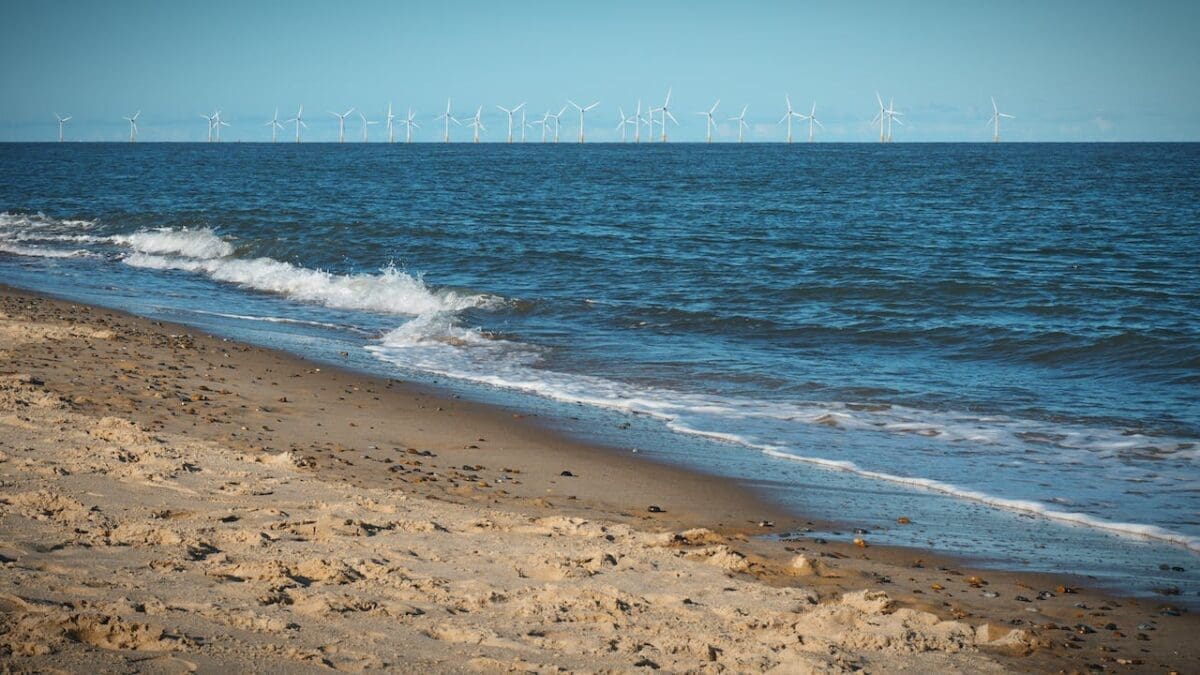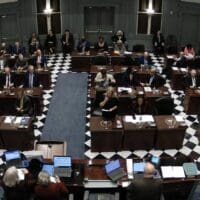

Delaware has started negotiations with US Wind to bring power ashore at Delaware Seashore State Park. Photo by Suzy Hazelwood/Pexels
Delaware will negotiate a deal with US Wind for its two wind farms, including a $350,000 a year cable landing on Delaware Seashore State Park, as well as energy credits and funding for workforce and environmental projects.
The move comes after years of public controversy over whether wind power is a viable renewable source of energy and will reduce costs for state residents.
Many residents were split over whether wind farms and bringing power ashore in Delaware would ruin the pristine nature of the park and beach experience in general.
A working initial Term Sheet signed Tuesday by Gov. John Carney and US Wind CEO Jeffrey Grybowski discusses the direction of negotiations over a lease at 3Rs Beach at the state park for an underground cable landing to deliver power from the turbines to the regional electrical grid.
“This agreement means Delaware will become an active player in the growing offshore wind industry,” Carney said in the press release announcing the negotiatiions.
“It aligns with other objectives, including our emission reduction targets and meeting the net-zero carbon goal set last year by House Bill 99. Transitioning to clean energy sources is essential to reducing manmade greenhouse gas emissions that are driving climate change, and these wind projects are part of that transition.”
US Wind plans two wind farms, MarWin and Momentum Wind, off the coast near Ocean City, Maryland.
Opponents of the plan to use wind energy were not surprised at the announcement, but continue to disapprove based on several points, including the high costs of getting going. Danish energy company Ørsted said last month it was dropping two wind farm projects in New Jersey, because of supply chain issues, regulatory timelines and increased interest rates.
The Delaware-US Wind term sheet includes plans to ensure “Delaware’s residents, the people, communities and ratepayers of Delaware receive benefits from the development, construction and operation of the projects,” such as:
- 150,000 renewable energy credits each year associated with the wind generation, which would be transferred at no cost to Delaware utilities to help them meet clean energy requirements and lower customer bills. The credits have an estimated value of $76 million over the life of the projects.
- Funding for dredging projects in Delaware’s coastal areas
- Funding for clean energy workforce development training at Delaware colleges and schools
- An environmental education scholarship fund
- A Resiliency Fund for climate change projects at state parks
- Replenishing the 21st Century Fund, which funds environmental, facility, stewardship, interpretation, environmental justice, and youth & veteran conservation corps projects in State Parks.
- The agreement outline proposes that US Wind will provide $40 million for the community benefits projects over 20 years, with specific amounts for each to be determined.
US Wind’s Grybowski said offshore wind will help to lower electricity bills for the people of Delaware and will improve air quality across the state by reducing reliance on burning fossil fuels.
“We plan to deliver a massive amount of clean energy directly into the electric grid in Delaware and that direct link means a lot of benefits locally,” he said.
Wind farm cable landing
US Wind’s filing with the federal Bureau of Ocean Energy Management proposes multiple routes, one of which comes ashore at 3Rs Beach just south of the Indian River Inlet, then runs underneath Indian River Bay to a substation at the Indian River Power Plant, where it will connect to regional grid.
The lease negotiation will be separate from the necessary environmental permits that US Wind will have to obtain for its cable routes, which will go through the established administrative process that includes public comment.
The land lease with Delaware State Parks does not prejudge or guarantee favorable outcome of the environmental permits, the press release said.
IN THE NEWS: Wilmington reduces parking fines; rips out meters for kiosks
Prior to finalizing the lease, State Parks and US Wind will hold a public information session to share details of the work to be done at 3Rs Beach.
When complete, US Wind’s plans show that the only visible evidence of the underground cable crossing from the wind farms would be a manhole in the parking lot.
The US Wind projects are likely to be among the first wind projects in operation in the mid-Atlantic, the press release said.
The projects will sell carbon-free power into the regional power grid, and this new source of power generation is projected by US Wind to lower regional energy prices and capacity charges by up to $253 million over 20 years.
US Wind will also invest more than $200 million in transmission system upgrades.
The US Wind Projects are going through a federal permitting process that is separate from any state process, and BOEM is currently considering input from a recent public comment process on the Projects’ environmental impact.
The state on Tuesday announced a new superintendent, Lindsey Goebel, for the Delaware Seashore State Park.


Betsy Price is a Wilmington freelance writer who has 40 years of experience.
Share this Post









